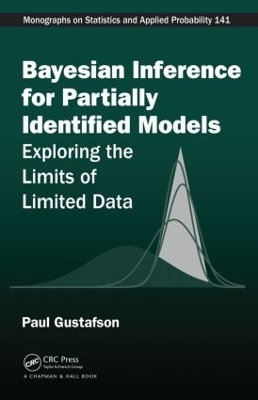
Bayesian Inference for Partially Identified Models
Exploring the Limits of Limited Data
Seiten
2015
Chapman & Hall/CRC (Verlag)
9781439869390 (ISBN)
Chapman & Hall/CRC (Verlag)
9781439869390 (ISBN)
Bayesian Inference for Partially Identified Models: Exploring the Limits of Limited Data shows how the Bayesian approach to inference is applicable to partially identified models (PIMs) and examines the performance of Bayesian procedures in partially identified contexts. Drawing on his many years of research in this area, the author presents a thorough overview of the statistical theory, properties, and applications of PIMs.
The book first describes how reparameterization can assist in computing posterior quantities and providing insight into the properties of Bayesian estimators. It next compares partial identification and model misspecification, discussing which is the lesser of the two evils. The author then works through PIM examples in depth, examining the ramifications of partial identification in terms of how inferences change and the extent to which they sharpen as more data accumulate. He also explains how to characterize the value of information obtained from data in a partially identified context and explores some recent applications of PIMs. In the final chapter, the author shares his thoughts on the past and present state of research on partial identification.
This book helps readers understand how to use Bayesian methods for analyzing PIMs. Readers will recognize under what circumstances a posterior distribution on a target parameter will be usefully narrow versus uselessly wide.
The book first describes how reparameterization can assist in computing posterior quantities and providing insight into the properties of Bayesian estimators. It next compares partial identification and model misspecification, discussing which is the lesser of the two evils. The author then works through PIM examples in depth, examining the ramifications of partial identification in terms of how inferences change and the extent to which they sharpen as more data accumulate. He also explains how to characterize the value of information obtained from data in a partially identified context and explores some recent applications of PIMs. In the final chapter, the author shares his thoughts on the past and present state of research on partial identification.
This book helps readers understand how to use Bayesian methods for analyzing PIMs. Readers will recognize under what circumstances a posterior distribution on a target parameter will be usefully narrow versus uselessly wide.
Paul Gustafson is a professor in the Department of Statistics at the University of British Columbia. He is the statistics editor for Epidemiology as well as an associate editor for the Journal of the American Statistical Association (Applications and Case Studies Section) and Statistics in Medicine. His current research focuses on identification issues in Bayesian analysis.
Introduction. The Structure of Inference in Partially Identified Models. Partial Identification versus Model Misspecification. Models Involving Misclassification. Models Involving Instrumental Variables. Further Examples. Further Topics. Concluding Thoughts. Index.
| Reihe/Serie | Chapman & Hall/CRC Monographs on Statistics and Applied Probability |
|---|---|
| Zusatzinfo | 2 Tables, black and white; 45 Illustrations, black and white |
| Sprache | englisch |
| Maße | 156 x 234 mm |
| Gewicht | 408 g |
| Themenwelt | Mathematik / Informatik ► Mathematik |
| Studium ► Querschnittsbereiche ► Epidemiologie / Med. Biometrie | |
| Naturwissenschaften ► Biologie | |
| ISBN-13 | 9781439869390 / 9781439869390 |
| Zustand | Neuware |
| Informationen gemäß Produktsicherheitsverordnung (GPSR) | |
| Haben Sie eine Frage zum Produkt? |
Mehr entdecken
aus dem Bereich
aus dem Bereich
ein überfälliges Gespräch zu einer Pandemie, die nicht die letzte …
Buch | Hardcover (2024)
Ullstein Buchverlage
CHF 34,95
Health Information for International Travel
Buch | Softcover (2025)
Oxford University Press Inc (Verlag)
CHF 85,50


